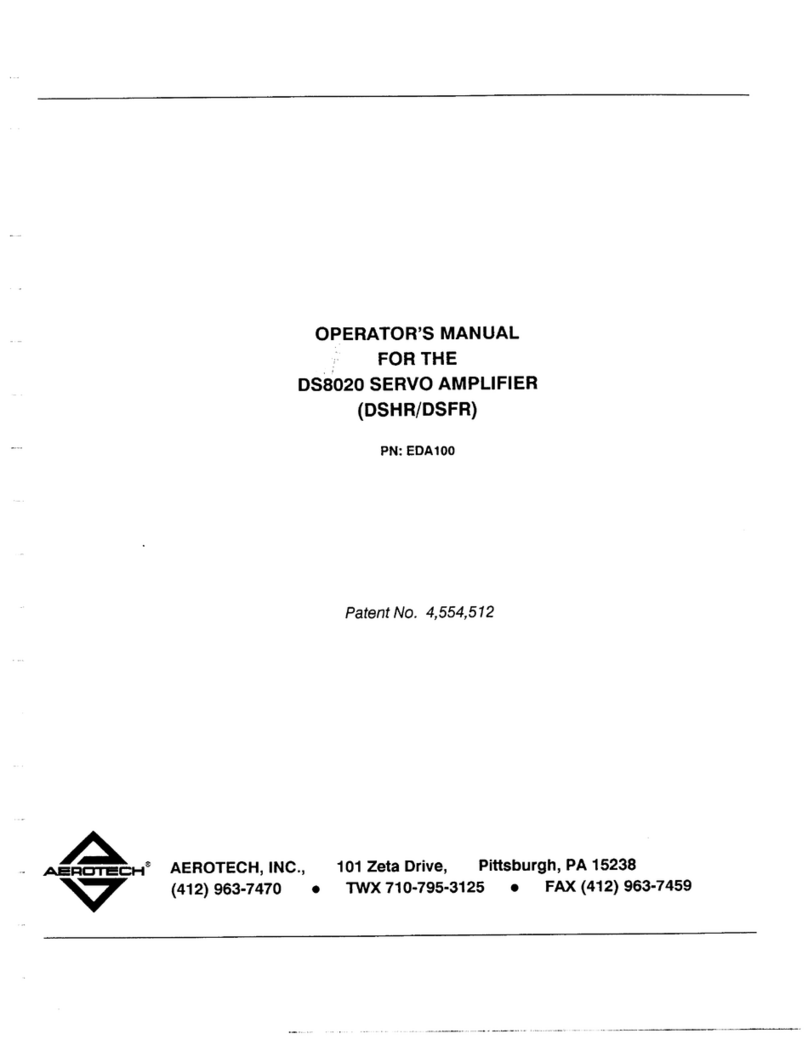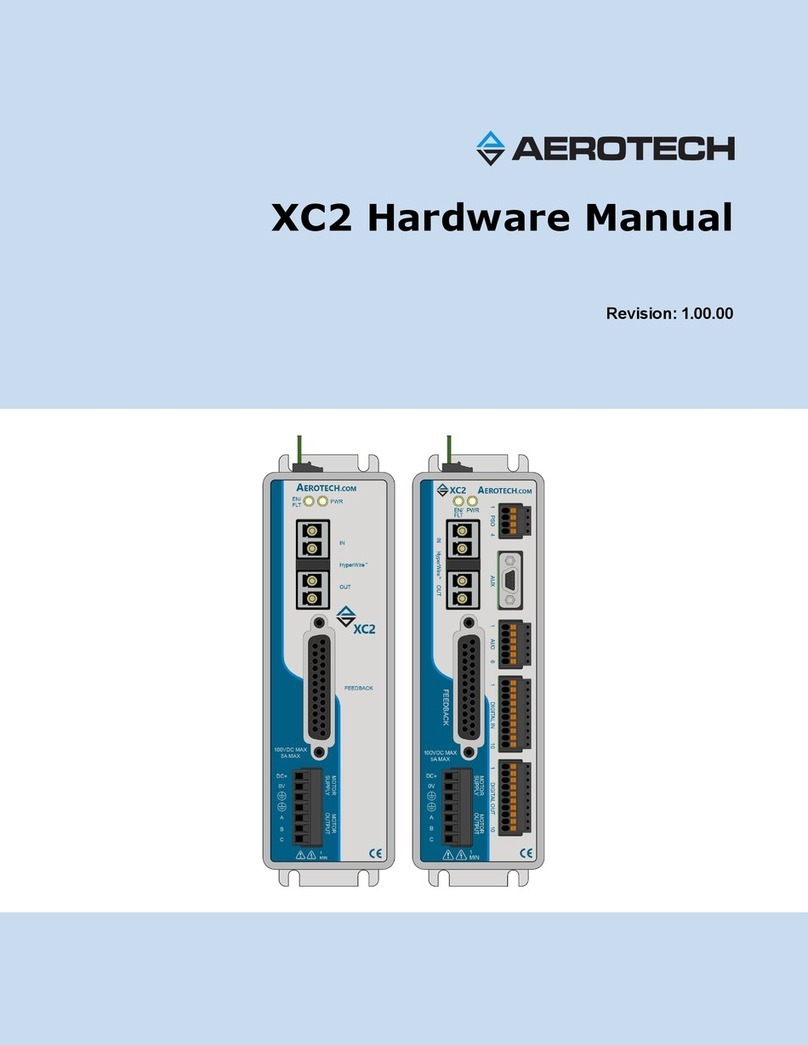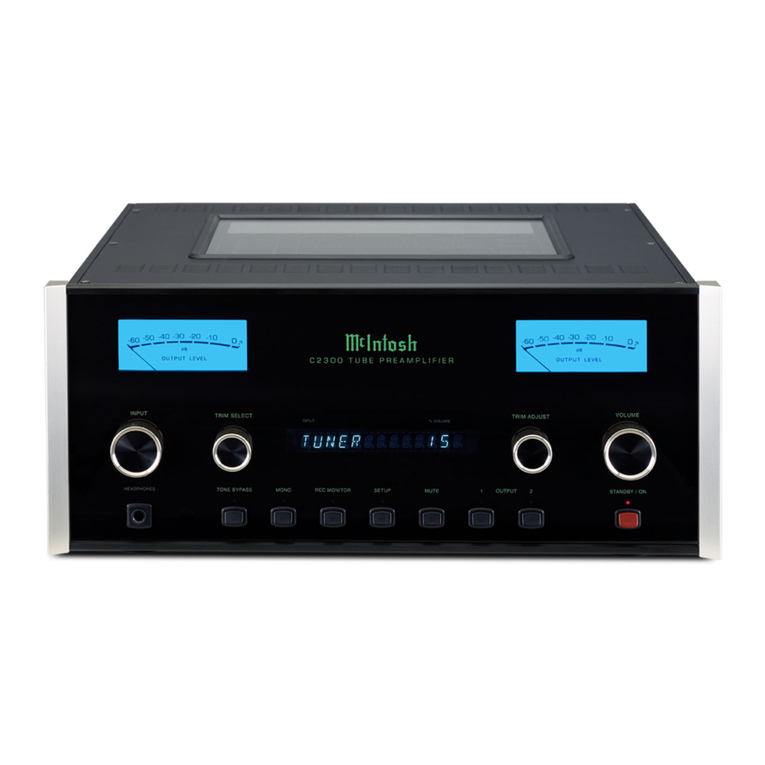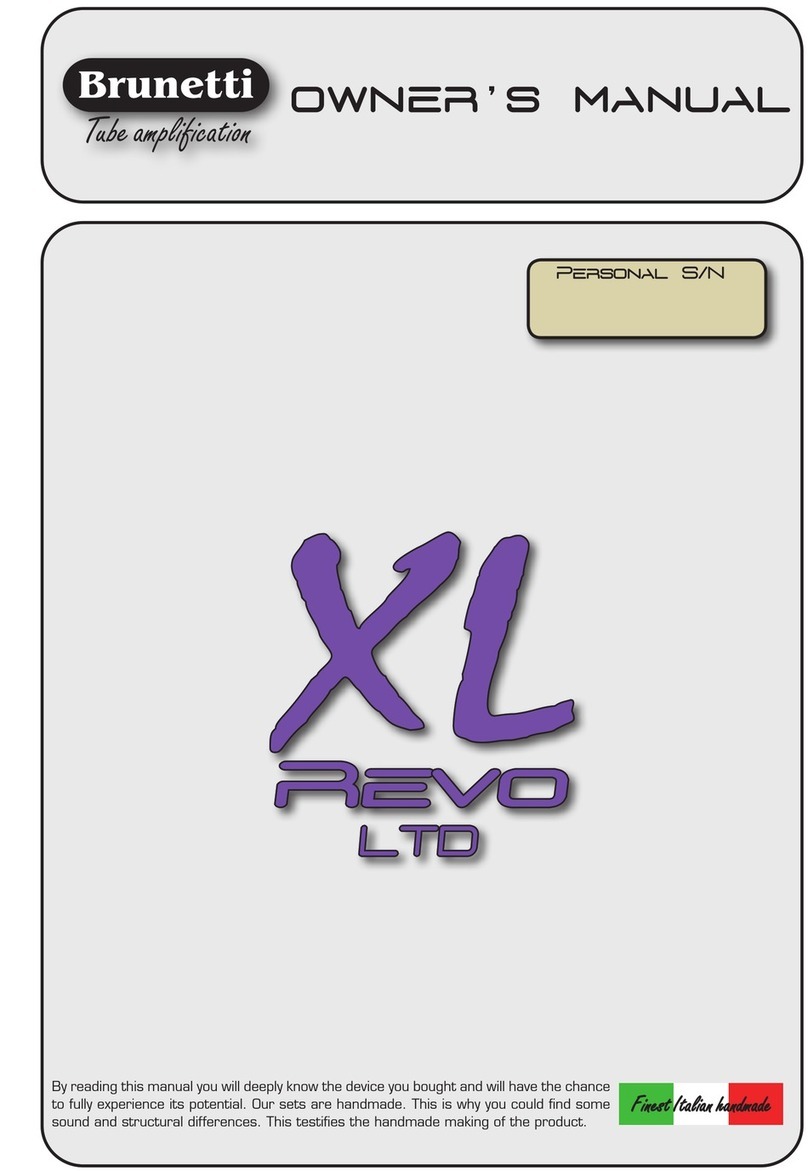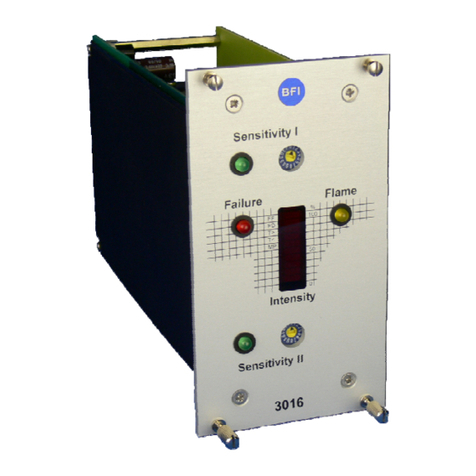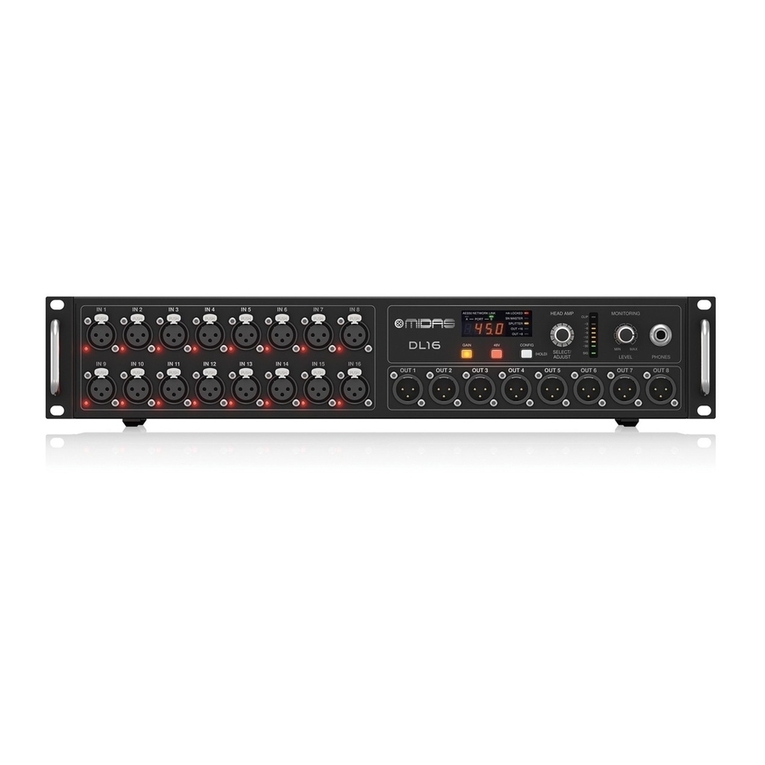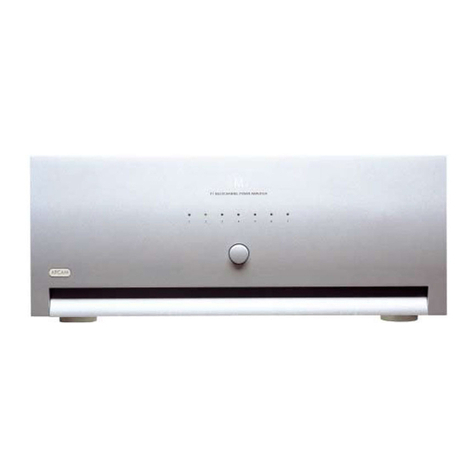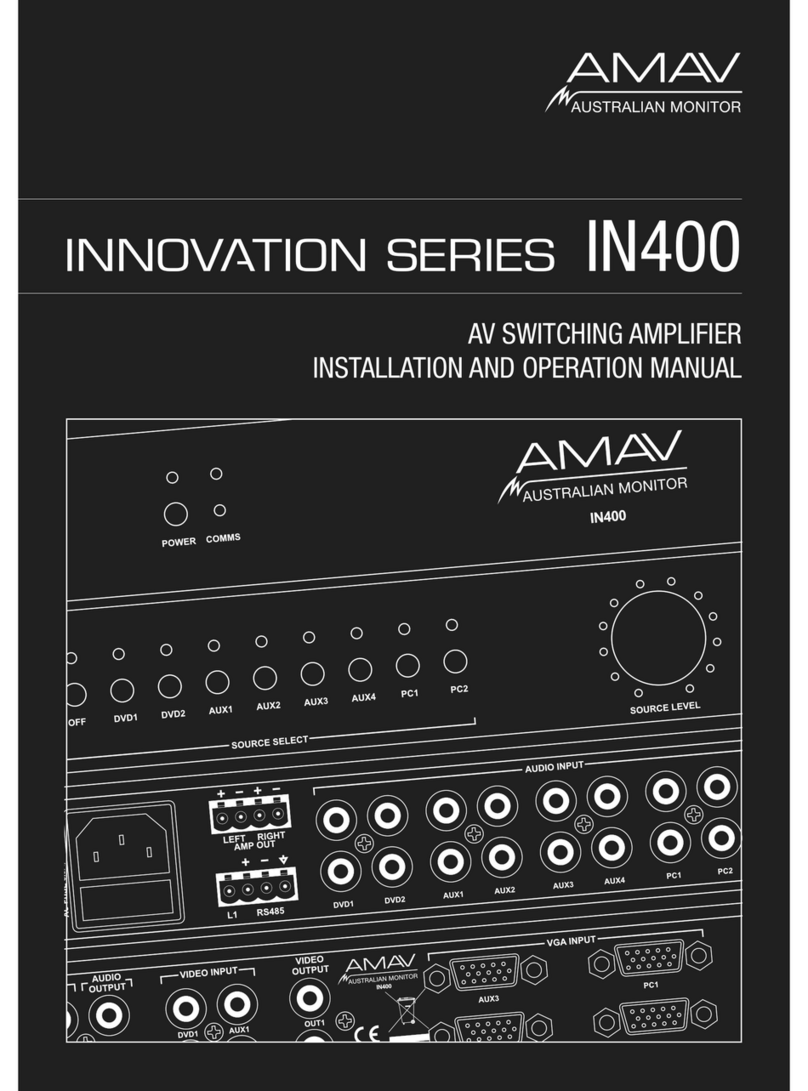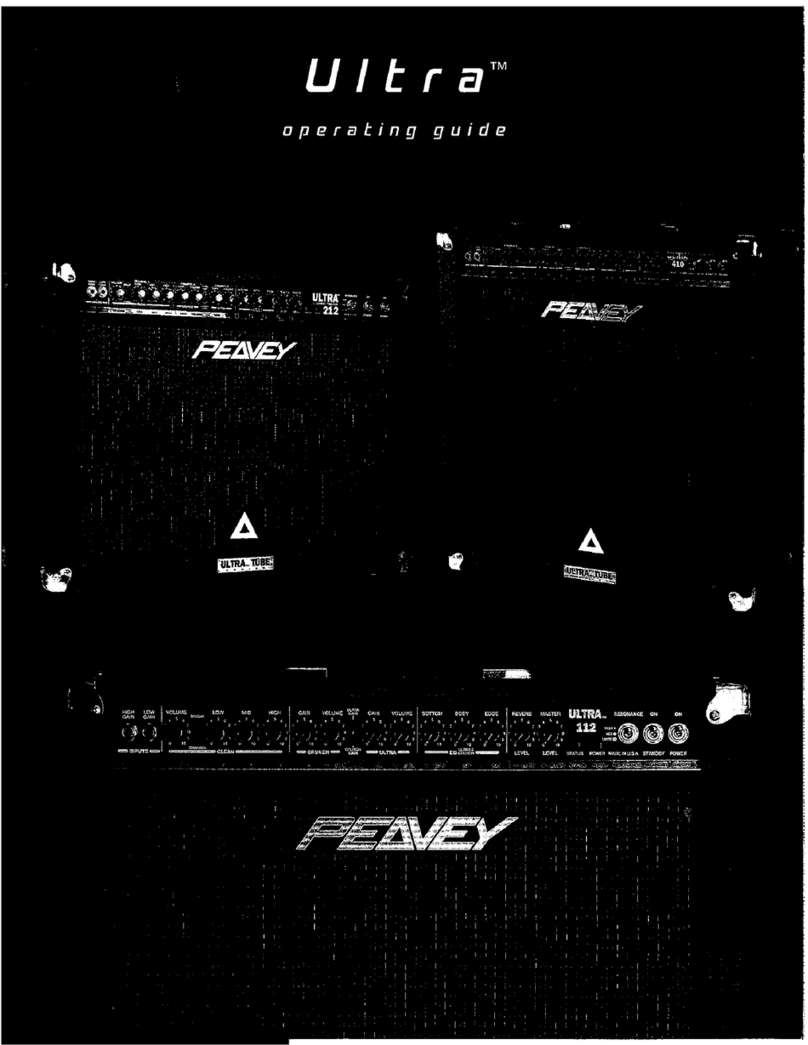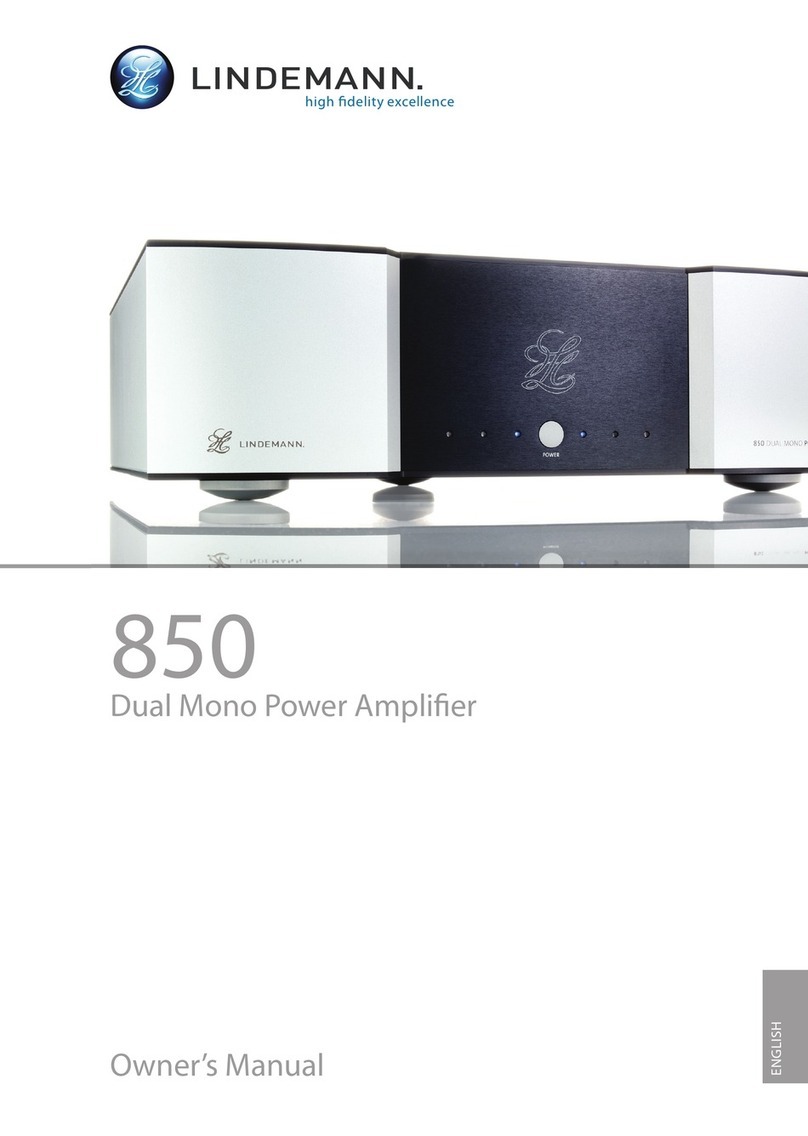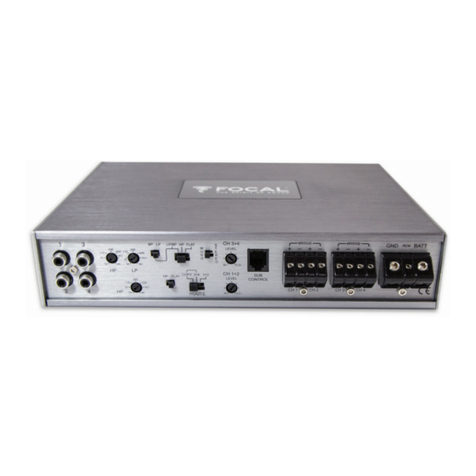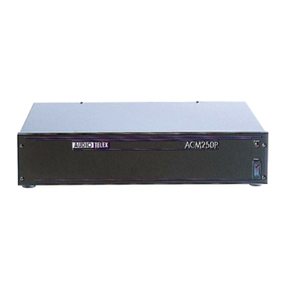Aerotech EDA139 User manual

BAL LINEAR AMPLIFIER SERIES
USER’S MANUAL
P/N: EDA139 (V1.5)
AEROTECH, Inc. •101 Zeta Drive •Pittsburgh, PA. 15238-2897 •USA
Phone (412) 963-7470 •Fax (412) 963-7459
Product Service: (412) 967-6440; (412) 967-6870 (Fax)
www.aerotech.com

If you should have any questions about the BA Linear Amplifier, comments regarding the documentation, or are
looking for manual updates, please refer to Aerotech online at:
http://www.aerotech.com.
For your convenience, a product registration form is available at our web site.
Our web site is continually updated with new product information, free downloadable software and special pricing on
selected products.
The BAL Linear Amplifier Series User’s Manual Revision History:
Rev 1.0 February 27, 1998
Rev 1.1 June 23, 1998
Rev 1.2 May 9, 2000
Rev 1.3 April 6, 2001
Rev 1.3a July 19, 2001
Rev 1.4 October 11, 2001
Rev 1.5 May 23, 2002
© Aerotech, Inc., 2002

BA Linear Series User’s Manual
Table of Contents
Version 1.5 Aerotech, Inc. iii
TABLE OF CONTENTS
CHAPTER 1: INTRODUCTION............................................................................ 1-1
1.1. Product Overview............................................................................... 1-1
1.2. Models, Options and Packages...........................................................1-2
1.3. BAL Drive Package............................................................................ 1-3
1.4. Hardware Overview and Function...................................................... 1-5
1.4.1. Motor and AC Power Connections....................................... 1-5
1.4.2. DIP Switch........................................................................... 1-6
1.4.3. Potentiometers (POTs)......................................................... 1-7
1.4.4. Connector J6 and Enable Indicator ...................................... 1-7
1.4.5. I/O Circuitry....................................................................... 1-10
1.5. Safety Procedures and Warnings...................................................... 1-12
CHAPTER 2: INSTALLATION AND OPERATION........................................... 2-1
2.1. Introduction........................................................................................ 2-1
2.2. Jumper Selections............................................................................... 2-1
2.3. Wiring Configurations........................................................................ 2-4
2.3.1. Velocity Command Configuration .......................................2-4
2.3.2. Torque Command Configuration (Current).......................... 2-5
2.3.3. Dual-Phase Command Configuration................................... 2-6
2.4. Three Phase Brushless Motors with Unconnected Phases.................. 2-7
2.5. Power and Control Connections.........................................................2-8
2.5.1. Setup – Torque Command Mode (Current).......................... 2-8
2.5.2. Setup – Velocity Command Mode....................................... 2-9
2.5.3. Setup – Dual Phase Command Mode................................. 2-11
2.6. DC Brush Motor Operation.............................................................. 2-12
2.6.1. Single Brush Motor............................................................ 2-12
2.6.2. Multiple Brush Motor ........................................................ 2-13
2.7. Motor Phasing Process..................................................................... 2-14
2.7.1. Determining Phase/Hall Sequence ..................................... 2-14
2.8. Current Regulator Adjustments ........................................................ 2-16
CHAPTER 3: TECHNICAL DETAILS.................................................................. 3-1
3.1. Part Number and Ordering Information.............................................. 3-1
3.2. Electrical Specifications..................................................................... 3-2
3.3. BAL Amplifier Dimensions................................................................ 3-5
CHAPTER 4: TROUBLESHOOTING................................................................... 4-1
4.1. Amplifier Related Problems............................................................... 4-1
APPENDIX A: GLOSSARY OF TERMS ............................................................... A-1
APPENDIX B: WARRANTY AND FIELD SERVICE...........................................B-1
APPENDIX C: CABLE DRAWINGS.......................................................................C-1
INDEX
REVISION HISTORY ∇∇∇

Table of Contents
BA Linear Series User’s Manual
iv Aerotech, Inc. Version 1.5

BA Linear Series User’s Manual
List of Figures
Version 1.5 Aerotech, Inc. v
LIST OF FIGURES
Figure 1-1. BAL Series Amplifier......................................................................... 1-1
Figure 1-2. Functional Diagram............................................................................ 1-4
Figure 1-3. Amplifier Hardware............................................................................ 1-5
Figure 1-4. Fault Output...................................................................................... 1-10
Figure 1-5. Enable/Shutdown Inputs................................................................... 1-10
Figure 1-6. 6Limit Inputs ................................................................................. 1-11
Figure 1-7. Hall and Encoder Inputs................................................................... 1-11
Figure 2-1. BAL Board Assembly with Jumper Locations ................................... 2-3
Figure 2-2. Velocity Command Configuration...................................................... 2-4
Figure 2-3. Torque (Current) Command Configuration........................................ 2-5
Figure 2-4. Dual-Phase Command Configuration................................................. 2-6
Figure 2-5. Connection of Six Wire Motors to BAL Series Amplifiers................ 2-7
Figure 2-6. Command Signal Adjustment Portion of the Pre-amplifier
Circuit............................................................................................... 2-10
Figure 2-7. Single Brush Motor Configuration with Tach .................................. 2-12
Figure 2-8. Multiple Brush Motor Configuration................................................ 2-13
Figure 2-9. Motor Phasing .................................................................................. 2-15
Figure 2-10. Current Command Interface Circuit ................................................. 2-16
Figure 3-1. BA Linear Amplifier Dimensions....................................................... 3-5
Figure C-1. BAL Feedback Cable (PFC)...............................................................C-1
Figure C-2. BAL Light Duty Brushless Motor Cable (PMC)................................C-2
∇∇∇

List of Figures
BA Linear Series User’s Manual
vi Aerotech, Inc. Version 1.5

BA Linear Series User’s Manual
List of Tables
Version 1.5 Aerotech, Inc. vii
LIST OF TABLES
Table 1-1. BAL Models and Voltage Configurations........................................1-2
Table 1-2. DIP Switch Functions.......................................................................1-6
Table 1-3. Potentiometer Functions...................................................................1-7
Table 1-4. Connector J6 Pinouts.........................................................................1-8
Table 2-1. Jumper Selections..............................................................................2-2
Table 3-1. Part Number and Ordering Example (BAL20-40-A-AH).................3-1
Table 3-2. Part Number and Ordering Options..................................................3-1
Table 3-3. Electrical Specifications....................................................................3-2
Table 4-1. Amplifier Faults, Causes, and Solutions............................................4-1
Table R-1. Revisions..........................................................................................R-1
∇∇∇

List of Tables
BA Linear Series User’s Manual
viii Aerotech, Inc. Version 1.5

BA Linear Series User’s Manual Introduction
Version 1.5 Aerotech, Inc. 1-1
CHAPTER 1: INTRODUCTION
In This Section:
•Product Overview..................................................... 1-1
•Models, Options and Packages................................. 1-2
•BAL Drive Package.................................................. 1-3
•Hardware Overview and Function............................ 1-5
•Safety Procedures and Warnings............................1-12
1.1. Product Overview
The BAL Series amplifiers are highly reliable brushless servo amplifiers (refer to Figure
1-1) that are easily adaptable to drive brush or brushless servomotors. The BAL amplifier
package is a complete modular unit that includes heat sink, metal cover, control and bus
power supplies that operate at ±40 VDC or ±80 VDC. The BAL drives provide the
designer with servo drive flexibility for use in applications such as:
½CMM (Coordinate Measurement Machines)
½x-y stages
½inspection and scanning (w/o Air Bearings)
½medical
½ and semiconductor fabrication.
Figure 1-1. BAL Series Amplifier

Introduction BA Linear Series User’s Manual
1-2 Aerotech, Inc. Version 1.5
1.2. Models, Options and Packages
A list of the available models and the voltage configurations is shown in Table 1-1.
Table 1-1. BAL Models and Voltage Configurations
Model Standard Voltage
Configuration Peak Output
Current Continuous Output
Current (peak)
BAL20-40-X ±40 VDC 20A 10A
BAL10-80-X
±80 VDC 10A 5A
BAL10-40-X
±40 VDC 10A 5A
Where:
X = A for 110 VAC single phase input power.
X = B for 220 VAC single phase input power.
X = C for 100 VAC sinlge phase input power.
The BAL drives feature self-commutation with analog or digital Hall effect feedback
signals. The BAL drives even include a 5 VDC, 250 mA supply to power encoders and
Hall effect devices (HEDs). Each model is jumper selectable, providing the capability to
drive both brush and brushless motors. Complete electrical isolation is provided between
the control stage and the power stage for all models of the BAL Series. This is
accomplished with a transformer isolated control voltage power supply and opto-isolation
of the drive signals, current command signals and fault signal between the control and
power stages. Each drive is fully protected against the following fault conditions:
➤control power supply under voltage
➤RMS current limit exceeded
➤power stage bias supplies under voltage
➤over temperature
➤over current
➤and excessive power transistor dissipation.
Operating modes include current command, velocity command or dual-phase command
(for brushless modes of operation only). For brush modes of operation, the available
operating modes are current command and velocity command. Differential inputs are used
for better noise immunity. Velocity feedback is from either an encoder or tachometer and
logic inputs include directional current limits and shutdown. Fault, current, and velocity
outputs simplify monitoring drive status. In addition, there is an option to drive three
brush motors in torque mode.

BA Linear Series User’s Manual Introduction
Version 1.5 Aerotech, Inc. 1-3
1.3. BAL Drive Package
A block diagram of the BAL Series servo amplifier is shown in Figure 1-2. This is a
simplified diagram of the internal modules of the BAL Series amplifier. Contained in the
drive is a 115/230 VAC 50/60 Hz step down toroidal isolation transformer that rectifies
its output to produce a ±40 VDC or a ±80 VDC bus depending on the model.
These buses power three class AB power amplifiers, each containing their own control
power supply and isolated current command input connections. These power amplifiers
work independently of each other, each only receiving a signal current command from the
control section, refer to Figure 1-2. In other words, each power amplifier has a current
regulating circuit and voltage regulating circuit, along with an adjustable current limit
time-out circuit and a dynamic power limit circuit.
The dynamic power limit circuit monitors the instantaneous power across each output
power transistor and clamps the incoming current command signal to a level just below
the second breakdown specification of the output transistor.
The current limit time-out circuit monitors the phase current. It sends a signal to the
control section to shutdown the entire servo amplifier, if the current in a given phase
exceeds a certain level (programmable) after a given time period. This time period is a
variable and depends on the amount of current above the programmed current threshold
level.
The control section contains its own isolated +5, ±12 VDC control supply. Depending on
the operating mode, the control section is responsible for accepting incoming current or
velocity command signals and providing digital or analog commutation processing on
these signals. In addition, it generates an internal velocity feedback signal from the
encoder, if the velocity mode is specified. Independent of the mode specified, the control
section produces three current command signals that are fed through opto-isolation to
each of the three amplifiers.

Introduction BA Linear Series User’s Manual
1-4 Aerotech, Inc. Version 1.5
Figure 1-2. Functional Diagram
Input
Power
Motor
Connections
Control
Connections
J8
LO
G
HI
+DC Bus
Toroidal
115VAC/230VAC
Step Down
Transformer
-DC Bus
“A”
Phase
Drive
“B”
Phase
Drive
“C”
Phase
Drive
Drive
Power
Supply
Drive
Power
Supply
Drive
Power
Supply
J8
B
C
A
ISOLATION
RT
G
FAULT
ISOLATION ISOLATION
CURRENT COMMAND “A”
CURRENT COMMAND “B”
CURRENT COMMAND “C”
J6
+5V and
+/- 12V
POWER
SUPPLY
CONTROL
SECTION

BA Linear Series User’s Manual Introduction
Version 1.5 Aerotech, Inc. 1-5
1.4. Hardware Overview and Function
The BAL Series consist of two power connections (motor power and input power), four
potentiometers, a 6-position DIP switch, an enable LED indicator lamp, and a 25-pin “D”
style connector. Refer to Figure 1-3 for locations.
Input Power Connection J8
Motor Power Connection J8
Enable LED
DIP Switch
Input POT
Tach POT
Gain POT
Control Connection J6
BALance Pot
Figure 1-3. Amplifier Hardware
1.4.1. Motor and AC Power Connections
The three phase motor terminal connections are made at connections A, B, C, and RT
(Return). This area is designated as such on the amplifier.
Input power to the BAL series amplifier is made at the HI (line) and LO (neutral)
terminals with earth ground connected to (or “G” Ground). Motor frame and shield
connect to a second Ground (G).

Introduction BA Linear Series User’s Manual
1-6 Aerotech, Inc. Version 1.5
1.4.2. DIP Switch
There is a 6-position DIP switch on the BAL drive that provides three discrete functions.
The switch permits the user to control maximum allowable current to the motor (self
commutating modes only), velocity or current operational mode, and test mode. Figure 1-
3 shows the location of this switch on the BAL drive. Refer to Table 1-2 for the exact
switch functions.
Table 1-2. DIP Switch Functions
Switches Position Function
1 closed Peak is 6% of Ipeak
2 closed Peak is 13% of Ipeak
3 closed Peak is 27% of Ipeak
Current Limit Peak
(self commutating
modes only)
4 closed Peak is 54% of Ipeak
Test 5 closed
Closing this position allows the
BALance potentiometer to manually
control motor velocity or torque without
the need of an input signal depending
upon the setting of switch 10.
Mode 6
Velocity/Current mode - closing this
position enables the current mode.
The following examples should be used as a guideline for setting the DIP switches.
Example for a BAL20 - Setting Continuous Current Limits
To set the continuous current limit to 5.5A:
5.5A Continuous RMS x 1.414 = 7.8A continuous peak
(7.8A continuous peak/20A max peak) x 100 = 39%.
Open switches 1 and 4; close switches 2 and 3.
CLOSED
OPEN

BA Linear Series User’s Manual Introduction
Version 1.5 Aerotech, Inc. 1-7
1.4.3. Potentiometers (POTs)
Potentiometers INPUT, TACH, GAIN, and BALance are associated with the
pre-amplifier circuit contained in the amplifier. Refer to Figure 1-3 for location of the
pots on the BAL drive. These potentiometers are used to adjust the pre-amplifier gain
when the MODE switch is set for velocity control using an external DC tachometer or
incremental encoder for velocity feedback. Refer to Table 1-3 for pot functions.
Table 1-3. Potentiometer Functions
Potentiometer CW CCW Function
GAIN decrease increase This pot adjusts the AC gain of the pre-
amplifier.
INPUT increase decrease
This pot adjusts the DC gain of the input
command present at J6 Pins 8 & 21.
TACH increase decrease This pot adjusts the DC gain of the tach or
encoder derived velocity feedback input
present at J6-Pin 3.
BALance Provides the means of canceling small DC
offsets that may be present in the
pre-amplifier circuit.
1.4.4. Connector J6 and Enable Indicator
Connector J6 (25-pin “D” type, female) provides the interface for input and output
control connections. Refer to Table 1-4 for connector J6 pinouts. The LED ENABLE
indicator will illuminate at all times until there is a fault or external shutdown, then the
indicator will be off and motor power will be removed. Refer to Figure 1-3 for location
of these items.

Introduction BA Linear Series User’s Manual
1-8 Aerotech, Inc. Version 1.5
Table 1-4. Connector J6 Pinouts
Pin # Input or
Output Signal Function
Pin 1 shield ground
Connection point to earth ground. Used for reducing electrical noise in
control and feedback signals. Typically connected to the foil shield of a
shielded cable.
Pin 2 output power On board 5V power supply. Pin 2 is intended for powering an encoder and
can supply up to 250mA of current.
Pin 3 input /
output +tach
Tachometer input for velocity feedback, (encoder vs. tach velocity
feedback is jumper selectable). A tachometer may be used in the velocity
loop configuration to provide negative feedback to the amplifier. This
allows the amplifier to close the servo loop and control the stability of the
loop. If an encoder is used for velocity feedback, this pin serves as an
output for monitoring velocity. (approx. 1V/KRPM)
Pin 4 input (1) Hall A
Hall effect A. One of three commutation signals used with brushless
motors. Used in conjunction with Hall effect B and Hall effect C to
provide motor rotor position information to the amplifier. This input is
also for connection of analog Hall A, if applicable.
Pin 5 input cosine Cosine signal from encoder. Optionally used, in conjunction with sine for
deriving an electronic tachometer signal. Line receiver input
Pin 6 input cosine-N Compliment of cosine (J6 - 5). Line receiver input.
Pin 7 input ground Signal common. Electrical reference for all control circuitry on amplifier.
Pin 8 input +input Non-inverting input of differential input circuit. A positive voltage on this
input causes CCW motor rotation (torque or velocity mode). For single
ended operation, connect command to this input and ground (Pin 21 of J6).
Pin 9 input icmda Current command A. Jumper selectable current command input. Bypasses
differential input, pre-amplifier, and self commutation circuit.
Pin 10 input (1) shutdown
Jumper selectable active high or active low input. Used to shut off power
stage and therefore remove all power to the motor.
Pin 11 input (1) +ilmt Directional current limit input. When pulled to its active state, motion in
the positive direction (CW motor shaft rotation) is inhibited (jumper
selectable).
Pin 12 input icmdc Current command C. Allows control of phase C current when jumper JP8
is set to 2-3. Normally phase C current is derived internally from phase A
and B currents.
Pin 13 N.C. Not used.
Pin 14 signal
common ground
Electrical reference for all control circuitry on amplifier. This pin is
intended to be used as the connection point for the signal common of an
encoder. (Used in conjunction with Pin 2 as the power supply connections
to an encoder.)
Pin 15 input -tach Recommended reference input for tachometer. This point is identical to
signal common.
Pin 16 input (1) Hall B Hall effect B. One of three commutation signals used with brushless
motors. Used in conjunction with Hall effect A and Hall effect C. This
input is also for connection of analog Hall B, if applicable.

BA Linear Series User’s Manual Introduction
Version 1.5 Aerotech, Inc. 1-9
Table 1-4. Connector J6 Pinouts (Continued)
Pin # Input or
Output Signal Function
Pin 17 input (1) Hall C Hall effect C. One of three commutation signals used with brushless
motors. Used in conjunction with Hall effect A and Hall effect B.
Pin 18 input sine Sine signal from encoder. Optionally used, in conjunction with cosine for
deriving an electronic tachometer signal. Line receiver input.
Pin 19 input sine-N Compliment of sine (J6- 18). Line receiver input.
Pin 20 input power On board 5V power supply. Same as J6 pin 2.
Pin 21 input -input Inverting input of differential input circuit. A positive voltage on this input
causes CW motor rotation (torque or velocity mode). For single ended
command operation, ground this connection and connect signal to Pin 8 of
J6.
Pin 22 input icmdb Current command B. Jumper selectable current command input. Bypasses
differential input, pre-amplifier, and self-commutation.
Pin 23 output -fault Jumper selectable active high or active low (open collector) output. Used
to indicate the status of the power stage (amplifier enabled or faulted).
Pin 24 input (1) -ilmt Directional current limit input. When pulled to its active state, motion in
the negative direction (CCW motor shaft rotation) is inhibited (jumper
selectable).
Pin 25 output -icmd Current command monitor. Representative of the current command (self
commutating modes only).
1. Denotes input pull up to internal +5 V through a 10K resistor.

Introduction BA Linear Series User’s Manual
1-10 Aerotech, Inc. Version 1.5
1.4.5. I/O Circuitry
The following shows the internal circuitry for the BAL amplifier. Note that all of the
logic inputs can tolerate +24VDC.
Figure 1-4. Fault Output
Figure 1-5. Enable/Shutdown Inputs
*
capable of 160mA max.
FAULT OUTPUT
2K
B
C
E
Q3
MMBT2222
P6-23
SHUTDOWN / ENABLE
+5V
10K
10K .1UF 74HC14
P6-10

BA Linear Series User’s Manual Introduction
Version 1.5 Aerotech, Inc. 1-11
Figure 1-6. 6Limit Inputs
Figure 1-7. Hall and Encoder Inputs
+ILMT
+5V
10K 1%
10K 1%
.1UF 74HC14
P6-11
-ILMT
+5V
10K 1%
10K 1%
.1UF 74HC14
P6-24
R225
C186
100PF
6
10K 1%
3
1
74HC14
5SN75157
R226
10K 1%
74HC14
74HC14
3
5
2
4
6
C187
100PF C188
100PF
10K 1%
10K 1%
R229
R228
R227
10K 1%
R224
10K 1%
HEA
HEB
HEC
P6-4
P6-16
P6-17
SIN
SIN-N
COS-N
P6-18
P6-19
P6-6
COS
P6-5
180
R219
180
R220
.01UF
C179
.01UF
C181 12
7SN75157
+5V +5V +5V

Introduction BA Linear Series User’s Manual
1-12 Aerotech, Inc. Version 1.5
1.5. Safety Procedures and Warnings
The following statements apply wherever the Warning or Danger symbol appears within
this manual. Failure to observe these precautions could result in serious injury to those
performing the procedures and/or damage to the equipment.
To minimize the possibility of electrical shock and bodily injury, ensure that the
motor is decoupled from the mechanical system and no harm to personnel will result
if the motor begins to spin.
Before performing the following steps, ensure that the motor is completely
disconnected from the amplifier and the associated mechanical system.
To minimize the possibility of electrical shock and bodily injury when any electrical
circuit is in use, ensure that no person comes in contact with the circuitry.
To minimize the possibility of bodily injury, make certain that all electrical power
switches (all switches external to the amplifier) are in the off position prior to making
any mechanical adjustments.
∇∇∇
WARNING
WARNING
This manual suits for next models
4
Table of contents
Other Aerotech Amplifier manuals
Popular Amplifier manuals by other brands

Pioneer
Pioneer GM-7150M user manual

YORKVILLE
YORKVILLE YCS100H - SERVICE Service manual
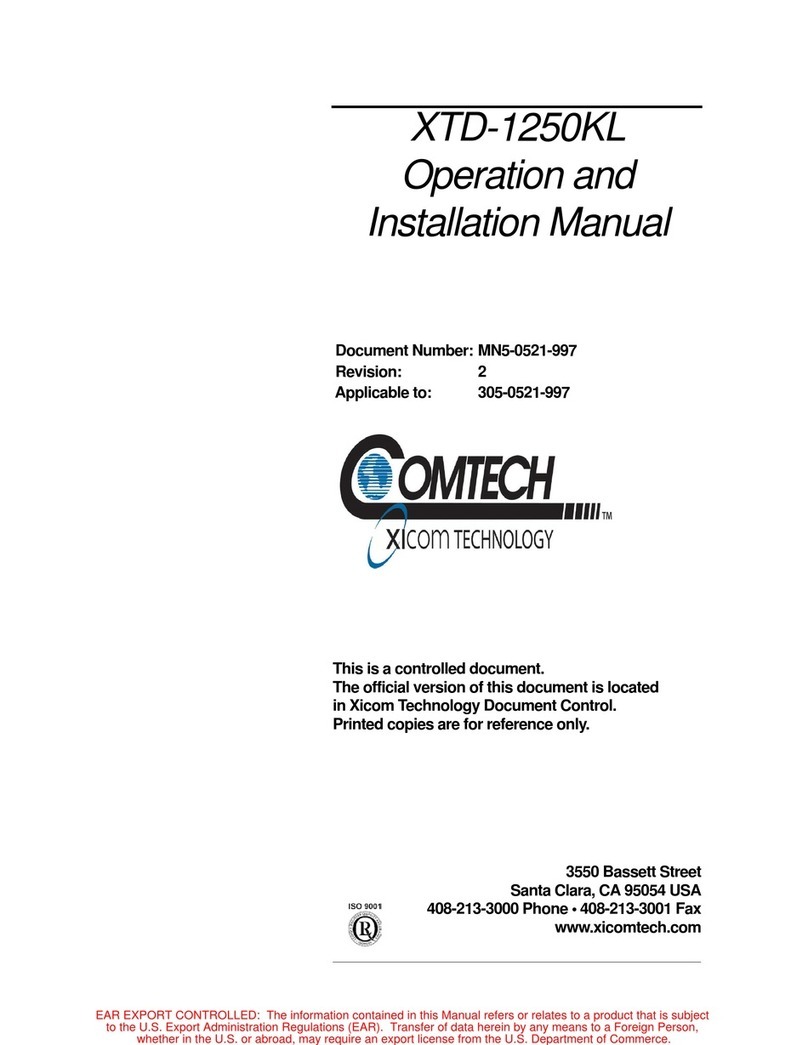
Comtech Xicom Technology
Comtech Xicom Technology XTD-1250KL Operation and installation manual
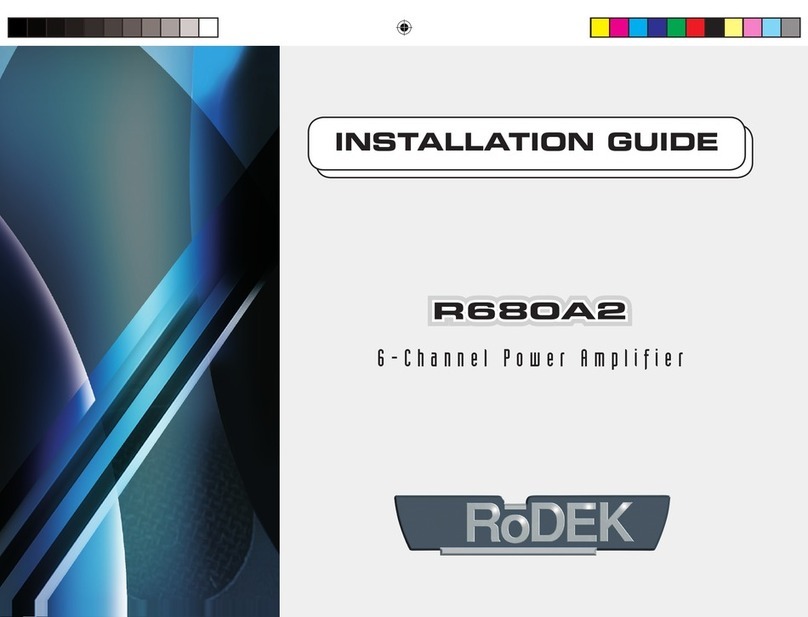
RoDEK
RoDEK R680A2 installation guide

Optimus
Optimus M50 Installation and operating instructions
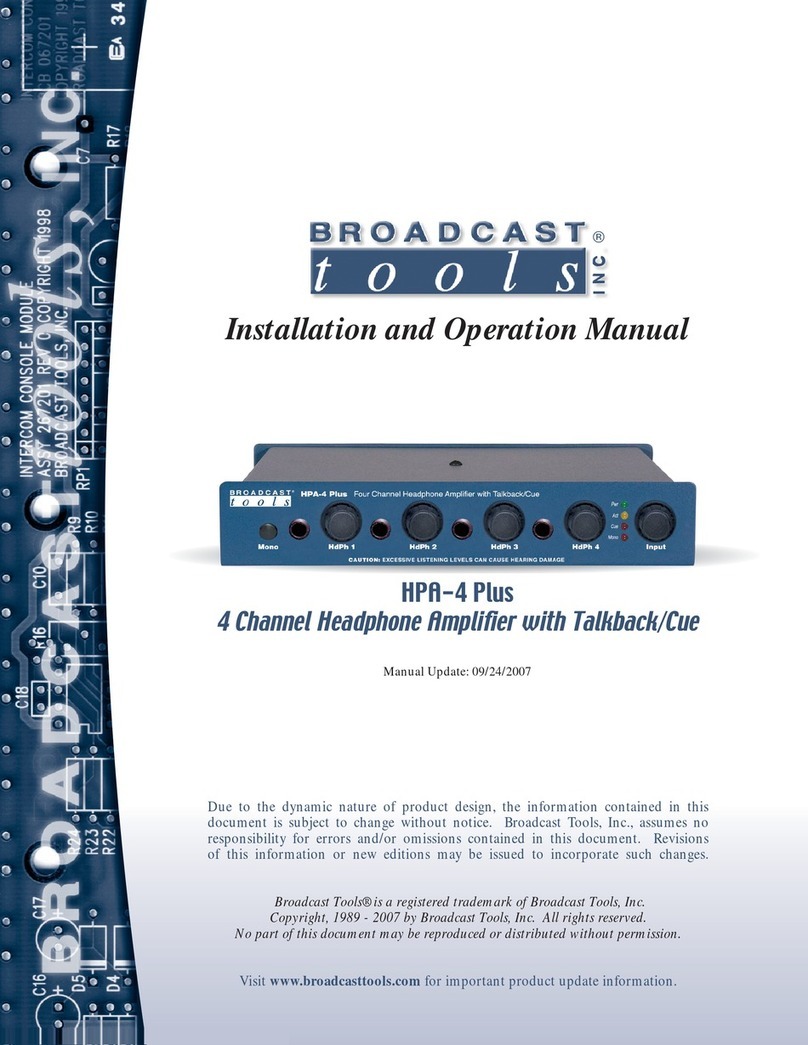
Broadcast Tools
Broadcast Tools HPA-4 Plus Installation and operation manual



